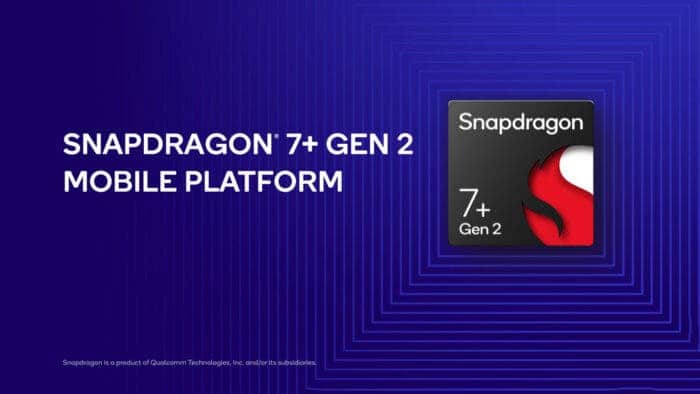Just recently, Qualcomm announced the Snapdragon 7+ Gen 2. From the announcement, it is clear that the SoC plans to offer a flagship-level performance in mid-tier phones. But that’s all from the on-paper specs.
Looking back, the Snapdragon 7+ Gen 2 has a similar configuration to the 8 Gen 1 SoC. It features a Cortex-X2 core that runs at 2.91GHz, three Cortex-A710 cores at 2.49GHz, and four Cortex-A510 cores at 1.8GHz. In short, this is the first time that the Cortex-X2 core made an appearance in a 7-series SoC. But can it deliver great performance?
About the Reference Design of the SoC
Before getting into the numbers, there’s a quick heads-up about the benchmark results. The phone that got benchmarked with the Snapdragon 7+ Gen 2 features a reference design. In other words, it is not a commercial phone. You can consider it to be a prototype, which is mainly meant for internal testing.
Considering that the current benchmark scores are from a reference design, you should expect commercial phone results to vary a lot. That is, actual phones with the Snapdragon 7+ Gen 2 chipset could be much better.
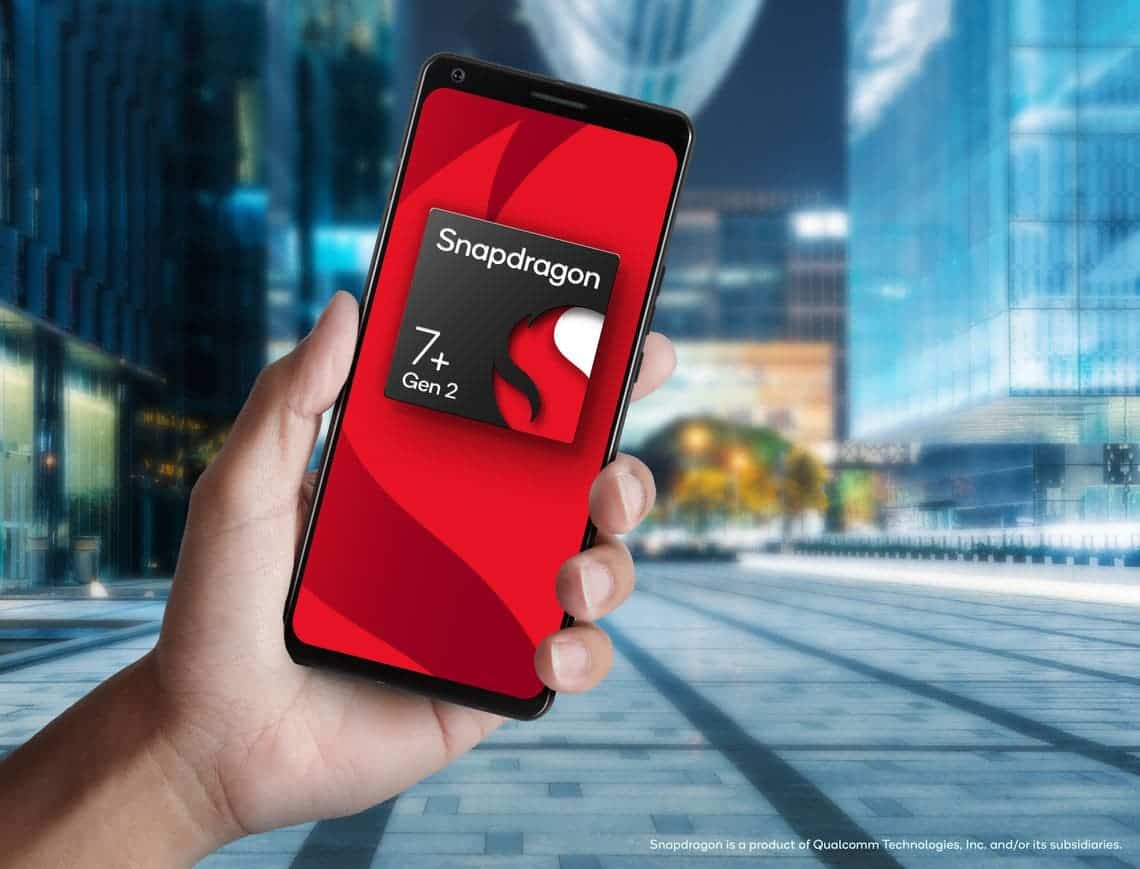
Nonetheless, the reference design has a 6.65-inch OLED screen, which sports an FHD+ resolution and 144Hz refresh rate. The 7+ Gen 2 is paired with 12GB of LPDDR5 RAM and 256GB of UFS 3.1 storage. In terms of battery, it has a 4192mAH cell. And there’s no active cooling or fan on the device.
CPU Test Results of Snapdragon 7 Plus Gen 2
We were expecting the CPU-related scores of the Snadrapgon 7+ Gen 2 to be similar to the 8 Gen 1. However, as the reference design shows, the 8 Gen 1 does have a little edge over the new SoC. The higher scores might be due to faster CPU clock speeds, as both CPUs have the same CPU cores.
Comparing the 8 Gen 1 with the 7+ Gen 2 is intriguing, considering that the chipsets underwent two different manufacturing processes. While the 8 Gen 1 is based on Samsung’s 4nm process, the 7+ Gen 2 is from TSMC’s 4nm process. And in comparison, the TSMC’s 4nm process is superior.
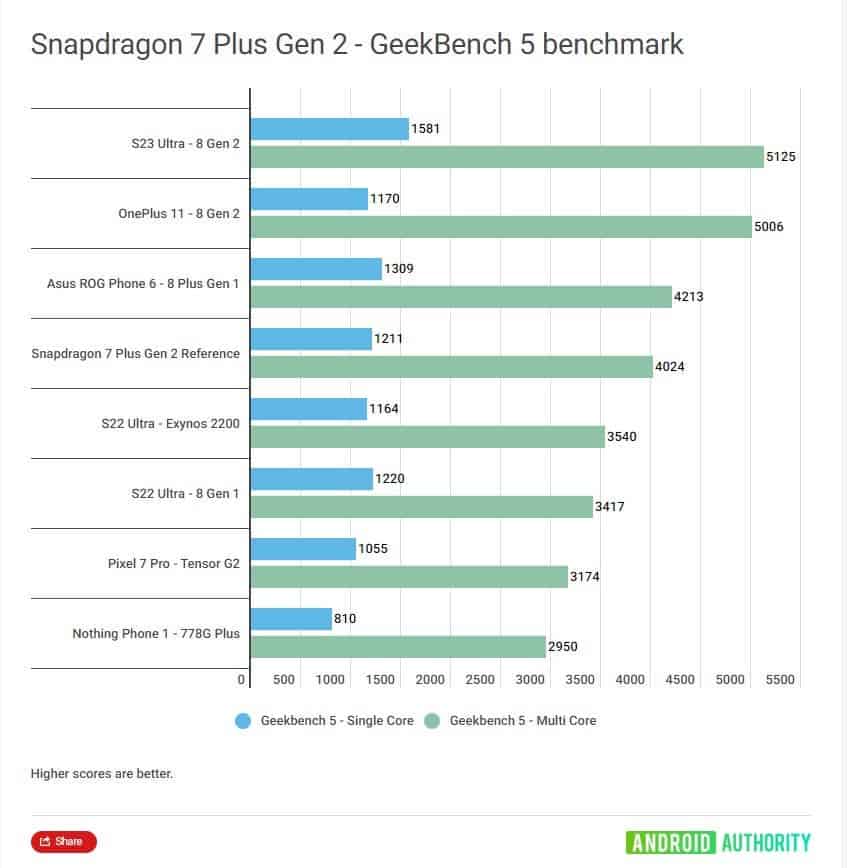
Nonetheless, as you can see, the Snapdragon 7+ Gen 2 beats the Exynos 2200 by a significant margin. And even though it beats the 8 Gen 1 of Galaxy S22 Ultra in the multi-core test, it’s a little behind in terms of the single-core test.
Another thing to note here is that the new Snapdragon 7 Plus Gen 2 SoC is far better than the 778G Plus. This confirms that the new SoC will indeed be the king of mid-range devices. However, there’s no denying that the SoC is not a perfect match for the 8 Plus Gen 1, and it is lagging behind the 8 Gen 2 by a lot.
Overall, the Snapdragon 7+ Gen 2 perfectly matches the standard Snapdragon 8 Gen 1. And the gap behind the 8 Plus Gen 1 SoC is not that much. So, if manufacturers increase the clock speed by a little, the brand-new SoC might beat the 8 Plus Gen 1.
GPU Results
Here’s where things get a little interesting. The GPU performance of the Snapdragon 7 Plus Gen 2 was a little vague in the announcement. For the closed-box nature of Adreno GPU architecture, no one really could tell how well it would fair against the currently available chipsets.
However, Qualcomm did state that the GPU performance of the 7+ Gen 2 SoC will be two times higher than the 7 Gen 1. But, do the benchmark results tell the same story?
The thing is, mid-range SoCs tend to suffer in the GPU category. They look very inferior, especially when compared with their flagship counterparts. And the 3DMark Wild Life results of Snapdragon 7+ Gen 2 suggest that the case will be the same for the new chipset.
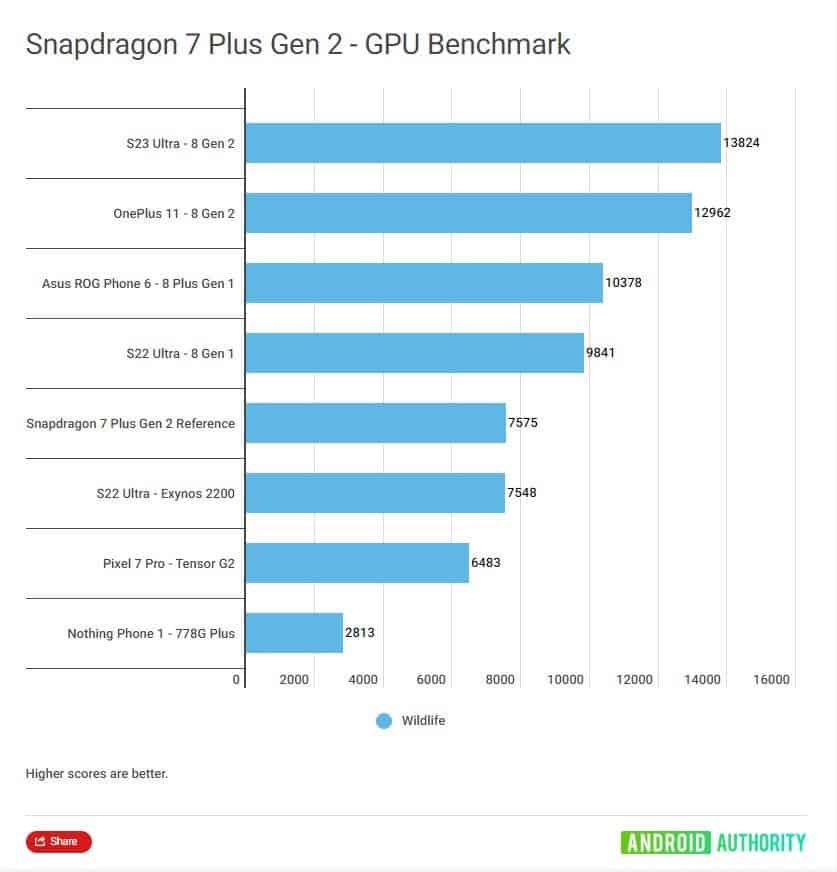
But the good thing is that the Snapdragon 7+ Gen 2 managed to offer a similar score as the Exynos 2220. That Samsung chipset has a high-end AMD GPU. And most importantly, the GPU of the new chipset managed to beat the Arm Mali GPU found in Pixel 7 Pro.
Moreover, the comparison shows that the reference design offers 2.7x times more GPU performance than the Snapdragon 778G Plus GPU found in Nothing Phone (1).
The results also highlight that the new CPU can meet today’s demanding games. That too, with considerably good framerates. However, if you are a serious gamer, the Snapdragon 8 Gen 1 or the 8 Gen 2 would still be a better choice. Even so, considering the fact that the 7+ Gen 2 is a mid-tier SoC, it did exceptionally great.
Stress Testing the 7 Plus Gen 2
You know how important stress tests are if you have been keeping tabs on proper CPU benchmarks. One-off GPU tests do not mean anything. That is why the team at AndroidAuthority has made the Snapdragon 7 Plus Gen 2 go through a stress test. It allowed them to better gauge the sustained performance of the chipset.
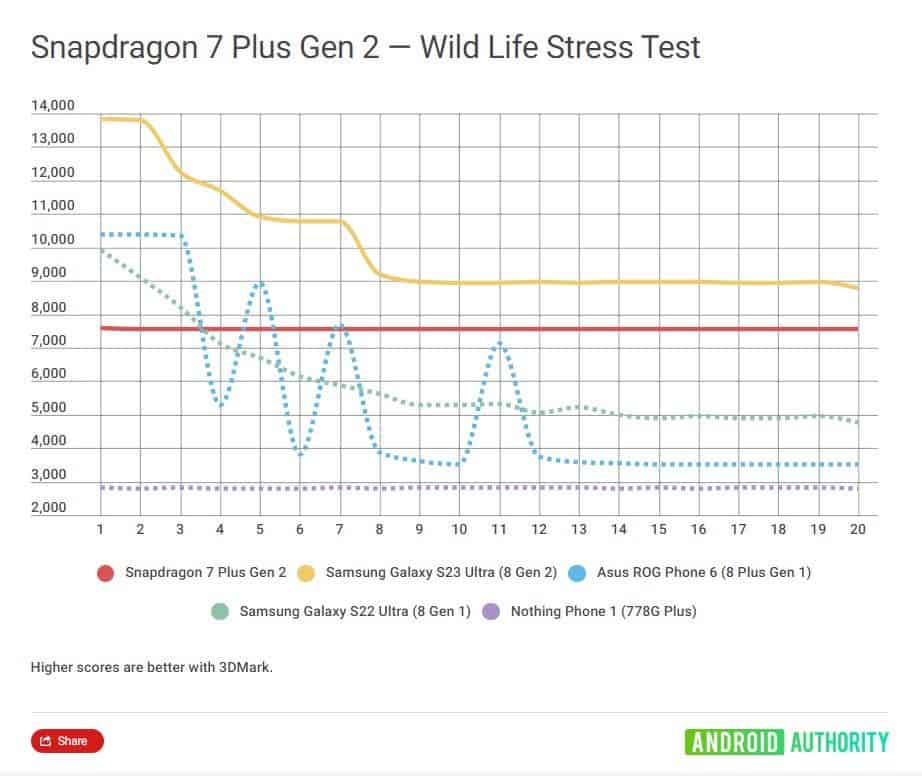
Well, the Snapdragon 7+ Gen 2 has held rock-solid stability in the 3DMark Wild Life Stress Test. In fact, the new chipset even beats the Snapdragon 8 Gen 1 by a large margin. And let’s not forget the fact that the results are from a reference phone. So, there can indeed be much better results from commercial phones.

